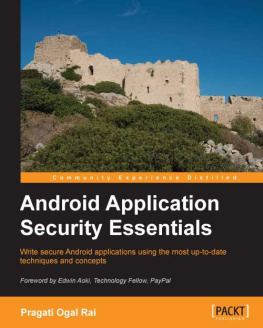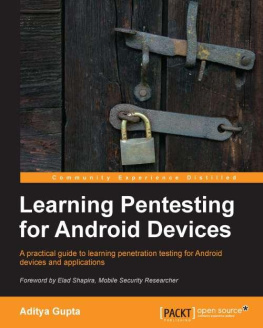Foreword
When I first began working at GO Corporation in the early 1990s, the state of the art in mobile computing was an 8-lb, clipboard sized device with minimal battery life and an optional 9600 baud modem. But the vision that drove that device could just as easily be applied to the newest Android and iOS devices released this year: the desire for an integrated, task-centric computing platform with seamless connectivity. Back then, we thought that the height of that vision would be the ability to "send someone a fax from the beach." By the time I helped AOL deliver AIM, its instant messaging client, as one of the launch titles for Apple's iPhone App Store in 2008, that vision was already on its way to becoming a reality. But even at that time, just a few years ago, we couldn't have predicted what a tremendous effect these devices and the app ecosystem they spawned would have on our day-to-day lives.
Today, mobile devices are everywhere. They entertain us, they help us pass the time; and of course, they help us keep in touch (though perhaps not so much through fax). The Android operating system by Google is one of the driving forces behind this revolution, having been adopted by hundreds of device vendors and installed on nearly a billion devices worldwide. But as these mobile devices pervade every corner of our lives, keeping themand their userssecure becomes critical. That's why this book is so important.
Viruses, Trojan horses, and malware may still be more prevalent on desktop platforms than they are on mobile. But the growth of the mobile market has meant a sharp rise in malicious software; anti-virus maker Kaspersky reports thousands of new programs detected each month. And today's smartphones and tablets represent an irresistible honey pot to the would-be attacker. Personal information, financial data, passwords, and social graphs, even up to the moment location dataeverything that makes these devices so valuable to consumers is also what makes them such an attractive target to pranksters and data thieves. As developers, it's our responsibility to be good stewards of the information our users have entrusted to us. And the open and integrated nature of the Android operating system means it's much more important that each of us do our part to secure our applications and services.
Security can't be just a checkbox or an afterthought; it needs to be part of the design, and woven throughout the implementation of your application. I know Pragati Rai understands this intimately, having worked on this problem from both the perspective of the OS and the application developer. That's why she's so well positioned to write this book. She is able to look at the entirety of the Android ecosystem, from device to kernel to application, and present clear and actionable steps developers can take to secure their applications and data, along with source code that illustrates their use and methodologies to test their effectiveness. Moreover, she goes beyond the bits and bytes to explore security policy and best practices that can balance a developer's desire to use personal information with the user's desire to protect it.
The convergence of powerful mobile devices, ubiquitous social media, and the ability to transmit, store, and consume vast quantities of data has raised the stakes for everyone when it comes to mobile security. But security is like the air we breathe; we don't really think about it until it's gone, and by then it's often too latetoo late to protect our users, and too late to protect the developer's reputation and business. So, it's critically important for every Android developer to understand the role they play in keeping users safe in this complex and ever-changing landscape.
As a developer and a user myself, I'm thankful that Pragati has taken the time to write such a comprehensive and informative guide to help us navigate this space, and I'm hopeful that her lessons will enable Android developers everywhere to give us the engaging and innovative applications we crave, while maintaining the security and trust we expect and deserve.
Edwin Aoki
Technology Fellow, PayPal
About the Author
Pragati Ogal Rai is a technologist with more than 14 years of experience in mobile operating systems, mobile security, mobile payments, and mobile commerce. From working as a platform security engineer with Motorola Mobility , to designing and developing PayPal's mobile offerings, she has an extensive end-to-end experience in all aspects of mobile technology.
Pragati has a dual Master's in Computer Science and has taught and trained computer science students at different levels. She is a recognized speaker at international technology events.
My sincere thanks to the entire Packt Publishing team for bringing this book to life. Special thanks to Hardik Patel, Madhuja Chaudhari, and Martin Bell for working diligently with me throughout the writing of this book and accommodating my crazy schedule. I want to acknowledge Alessandro Parisi for his candid comments and suggestions to improve the quality of the book.
Thanks to the thriving and vibrant community of Android developers who are the reason behind this book.
A big thank you to all my friends and family for encouraging me to write this book. In particular, I want to thank two families, the Khannas and the Kollis, who were my pillars of support during the writing of this book. Special thanks to Selina Garrison for her guidance and for being there for me. Last but most importantly, I want to thank my husband, Hariom Rai, and my son, Arnav Rai, who constantly encouraged, supported, and cheered me in their own ways as I wrote this book. Without them this book could not have been completed.









